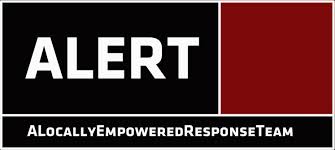Government Grants
Business Grants
Home Owner Programs
Federal Programs
About Us
GM-20-02-Data Gap: Characterizing the Seafloor in the Mesophotic Zone
The seafloor in the mesophotic zone (40–150 m) represents an area where BOEM lacks sufficient scientific information to confidently render management decisions that are not overly burdensome.
The Bureau has a clear need to characterize seafloor features, including shipwrecks, hard-bottom habitat, and pinnacles, and their ecological role to develop proper management and avoidance strategies based upon their ecological community structures.
Shipwrecks provide a hard, artificial substrate for colonizing organisms and provide shelter from predation for a diverse array of marine life.
The aim of this study is to document each selected shipwreck site and compare recruitment and community structure between these unique artificial reefs (shipwrecks) and natural reefs in order to provide insight into the colonization and role of shipwrecks as habitat.
This study will strategically target shipwreck locations (artificial reefs) with known nearby naturally-occurring hard-bottom benthic communities.
The Bureau has a clear need to characterize seafloor features, including shipwrecks, hard-bottom habitat, and pinnacles, and their ecological role to develop proper management and avoidance strategies based upon their ecological community structures.
Shipwrecks provide a hard, artificial substrate for colonizing organisms and provide shelter from predation for a diverse array of marine life.
The aim of this study is to document each selected shipwreck site and compare recruitment and community structure between these unique artificial reefs (shipwrecks) and natural reefs in order to provide insight into the colonization and role of shipwrecks as habitat.
This study will strategically target shipwreck locations (artificial reefs) with known nearby naturally-occurring hard-bottom benthic communities.
Related Programs
Minerals Management Service (MMS) Environmental Studies Program (ESP)
Department of the Interior
Agency: Department of the Interior
Office: Bureau of Ocean Energy Management
Estimated Funding: $35,984
Office: Bureau of Ocean Energy Management
Estimated Funding: $35,984
Relevant Nonprofit Program Categories
Obtain Full Opportunity Text:
MTO Solicitations Page
Additional Information of Eligibility:
Eligible applicants are coastal State Governments and Public, State-controlled institutions of higher education in the following Cooperative Ecosystem Studies Units (CESUs): Gulf Coast; Piedmont-South Atlantic Coast; Chesapeake Watershed; or North Atlantic Coast (see http://www.cesu.psu.edu).
The specific project identified in Section 2 is intended for eligible applicants.
However, cooperative research (establishment of teams) is encouraged and the applicant may include subcontracts to non-profit organizations, private institutions of higher education, private companies or public and state controlled institutions of higher education within their proposal.
This research project is required to have a staff member of the applying organization as the Principal Investigator (PI).
Cooperative research between interested organizations - i.e., state agencies, public universities, and non-profits in affected states - is always encouraged.
Federal entities as partners are allowed, however the tasks performed by the Federal partner and the associated budget must be presented separately by the Federal partner.
Other non-federal organizations may be partners and their tasks and budgets should be included in the non-profit’s proposal.
Full Opportunity Web Address:
http://www.darpa.mil/Opportunities/Solicitations/MTO_Solicitations.aspx
Contact:
Agency Email Description:
Paula.Barksdale@bsee.gov
Agency Email:
Date Posted:
2020-07-17
Application Due Date:
Archive Date:
2020-07-30
Social Entrepreneurship
Spotlight
When it Comes to Social Enterprises, Failure is the Best Platform for Innovation

In the world of social enterprises, failure is a cringe-worthy moment nobody wants to talk about. But, social entrepreneurs can benefit from their failures.

